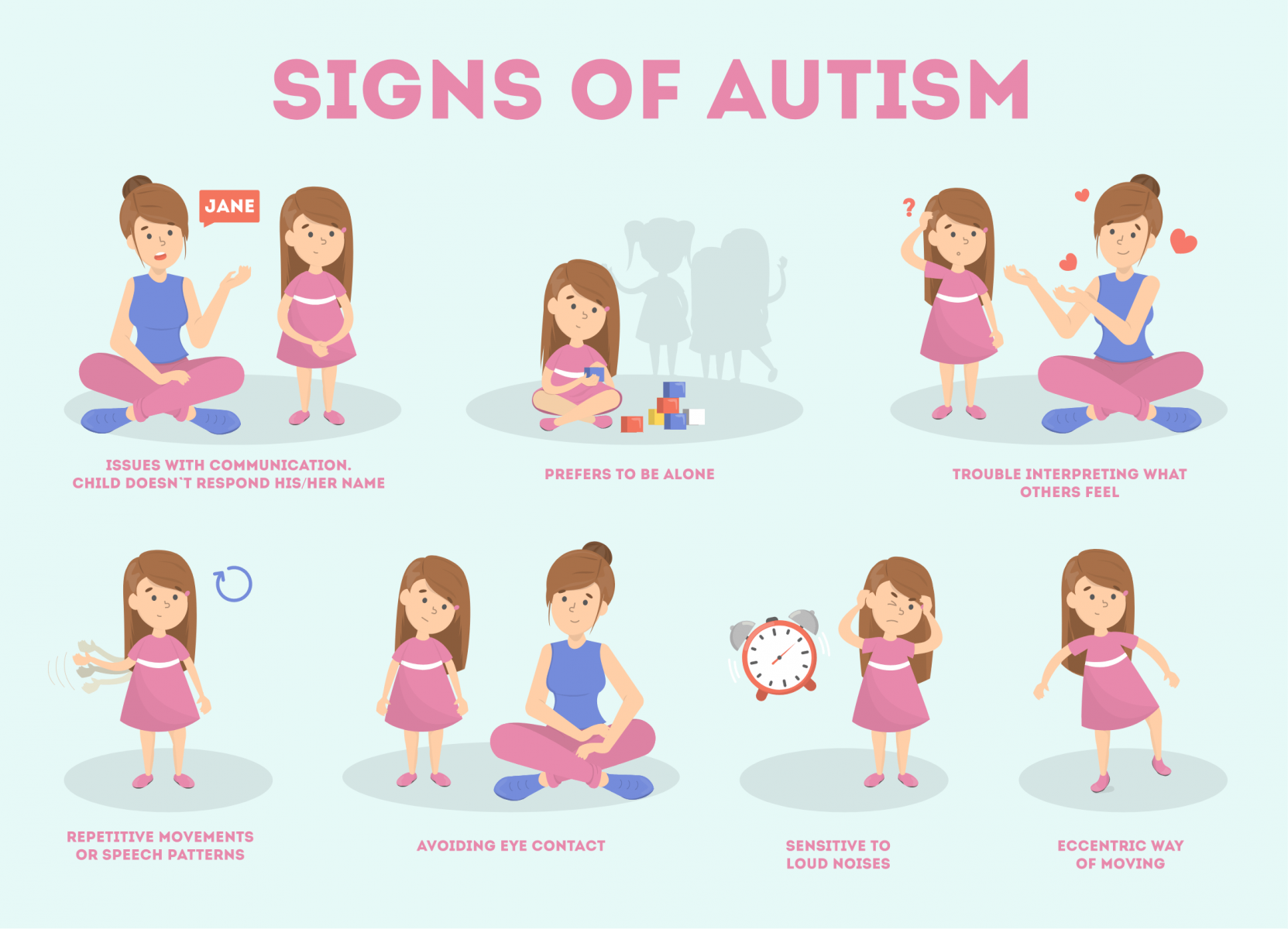Resolving Usual Misconceptions: What You Need To Find Out About Autism Today
Resolving Usual Misconceptions: What You Need To Find Out About Autism Today
Blog Article
Understanding Autism: A Comprehensive Overview to Signs and Signs And Symptoms
Autism Range Problem (ASD) encompasses a broad variety of attributes that can significantly impact an individual's social interactions and everyday functioning. Comprehending these subtleties not just help caretakers and instructors in providing appropriate support however likewise promotes a much more inclusive atmosphere for individuals with ASD.
Introduction of Autism Range Problem
Specifying Autism Range Condition (ASD) entails identifying it as an intricate neurodevelopmental problem identified by a variety of obstacles in social communication, interaction, and behavioral patterns. The term "spectrum" shows the broad variability in symptoms and their seriousness, which can differ considerably from one individual to another. ASD generally manifests in very early childhood years, although some people might not get a diagnosis until later on in life.
Variables affecting the advancement of ASD include environmental aspects and hereditary predispositions, although the exact reasons stay under investigation. Medical diagnosis commonly depends on behavioral analyses, as there are no conclusive medical examinations for ASD. Early intervention is essential and can significantly enhance outcomes, concentrating on improving communication abilities, social interactions, and flexible habits.
People with ASD may also display distinct toughness, such as phenomenal interest to information or certain areas of knowledge. Recognizing the diverse nature of ASD is essential for promoting a comprehensive atmosphere that suits neurodiversity. Continued study is important for creating effective treatments and assistance systems, allowing people with ASD to flourish and accomplish their potential within culture.
Usual Signs of Autism
Identifying the common indications of Autism Range Disorder (ASD) is crucial for very early identification and treatment. These indications can differ widely in intensity and discussion, but specific features are frequently observed in individuals with ASD.
One of one of the most widespread signs is a marked problem in developing and keeping eye get in touch with. People might additionally exhibit restricted rate of interest in social communications and reveal a choice for singular play. Repetitive behaviors, such as hand-flapping, rocking, or spinning items, usually arise early in childhood. Additionally, some children may establish stringent regimens and come to be troubled if these regimens are interfered with.
Sensory sensitivities are likewise common; individuals may underreact or panic to sensory stimulations, such as appearances, noises, or lights. autism. Language development can be irregular, with some youngsters displaying delayed speech or using language in uncommon methods, including echolalia-- repeating expressions or sentences heard elsewhere
It is essential to keep in mind that not every person with ASD will present all these indicators, and the degree of these behaviors can vary substantially. Early recognition enables prompt support and sources, improving the quality of life for those on the range.
Social Interaction Challenges
Social interaction difficulties are a hallmark of Autism Range Condition (ASD), impacting a person's ability to involve effectively with others. These troubles can materialize in numerous methods, including difficulties in initiating and keeping conversations, recognizing social cues, and reacting appropriately in helpful resources social communications.
Individuals with ASD might struggle with nonverbal interaction, such as eye contact, faces, and body movement. This can result in misconceptions, as their communicative intent may not be appropriately interpreted by others. Moreover, they may discover it hard to understand the subtleties of tone and context, which are important for reliable interaction.
In group settings, people with ASD might really feel overwhelmed and may not recognize how to join in conversations (autism). They could also display irregular conversational patterns, such as monologuing concerning specific rate of interests without identifying social reciprocity
Moreover, these difficulties can lead to social seclusion or troubles in forming relationships, as peers may misinterpret their behavior or communication style. Comprehending these social interaction obstacles is crucial for fostering supportive atmospheres that promote social abilities growth and boost the top quality of communications for people on the autism range.
Sensory Sensitivities and Reactions
Numerous individuals with Autism Range Condition (ASD) experience heightened sensory sensitivities that can significantly influence their everyday lives. A person with ASD may locate daily sounds, such as a vacuum cleanser or crowded environments, extremely traumatic, leading to stress and anxiety or meltdowns.
Sensory handling distinctions in individuals with ASD can also influence their capability to participate in social communications and regular activities. A youngster who is delicate to touch may stand up to physical affection or stay clear of certain garments fabrics. Conversely, a preference for sure structures or preferences can limit dietary alternatives and create obstacles during nourishments.
Understanding these sensory level of sensitivities is vital for acknowledging the unique experiences of individuals with ASD. Understanding of their sensory accounts can cultivate far better interaction and support strategies, producing an atmosphere that fits their requirements and boosts their top quality of life. Ultimately, acknowledging sensory sensitivities is a vital element of comprehending the wider spectrum of autism.

Sustaining People With Autism
Effective support for people with Autism Range Disorder (ASD) is vital for enhancing their overall wellness and cultivating independence. Support methods need to be tailored to meet the special demands of each person, considering their strengths and difficulties.

Social abilities training can additionally play a crucial role. autism. Engaging individuals in group activities or role-playing situations can boost their capacity to browse social communications. Additionally, it is important to inform family members, caregivers, and peers regarding ASD to promote a comprehensive and helpful neighborhood
Final Thought
By cultivating enhanced communication and social check this abilities, people with autism can navigate their environments extra efficiently. Eventually, boosted awareness and assistance can dramatically improve the quality of life for those influenced by ASD.
Autism Range Disorder (ASD) incorporates a large range of characteristics that can dramatically affect an individual's social communications and everyday functioning.People with ASD may battle with nonverbal interaction, such as eye contact, face expressions, and body language.Many people with Autism Spectrum Condition (ASD) experience heightened sensory level of sensitivities that can considerably impact their everyday lives.Sensory processing differences in people with ASD can likewise influence their ability to involve in regular activities and social communications.Understanding these sensory level of sensitivities is important for identifying the distinct experiences of people with ASD.
Report this page